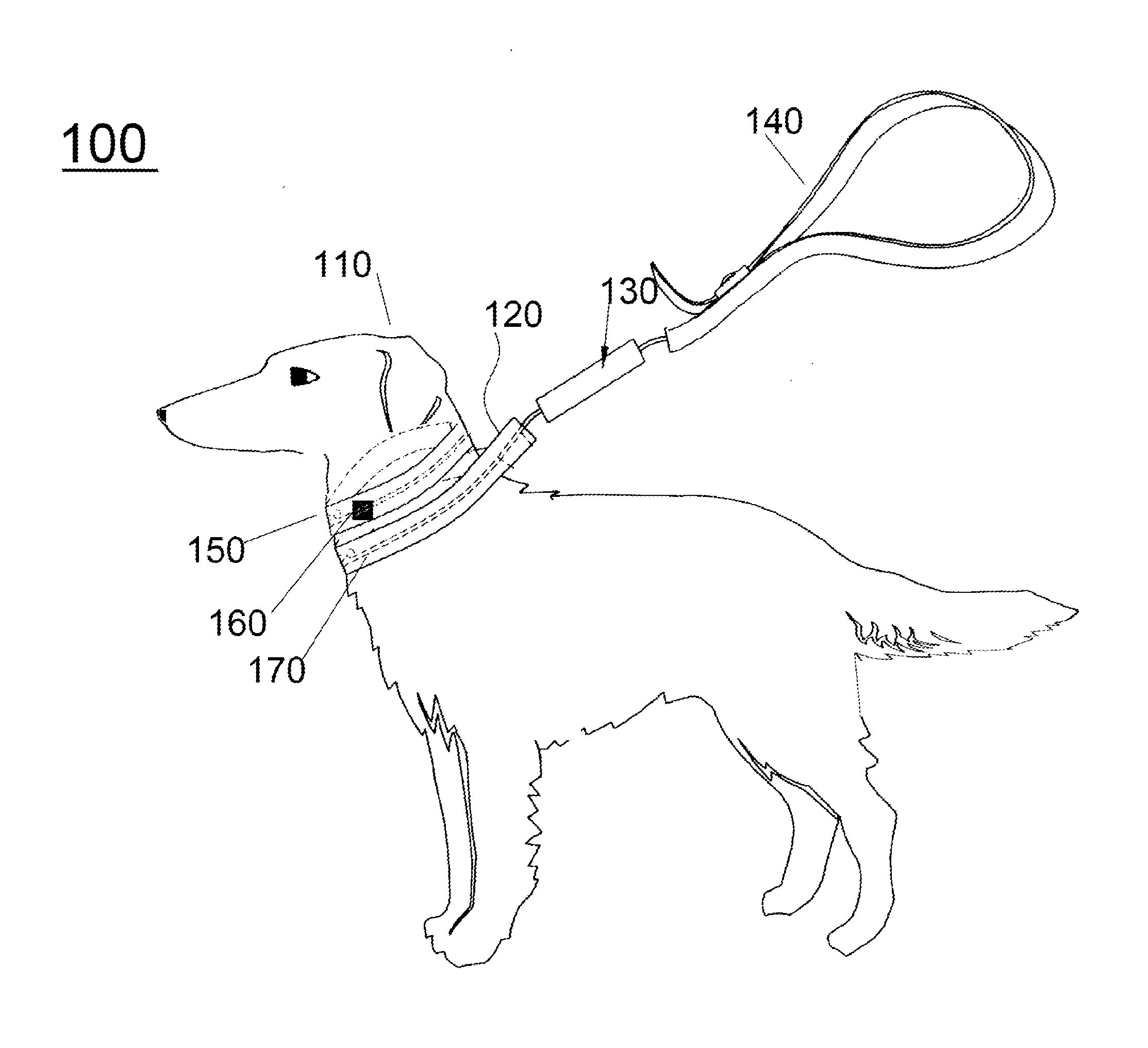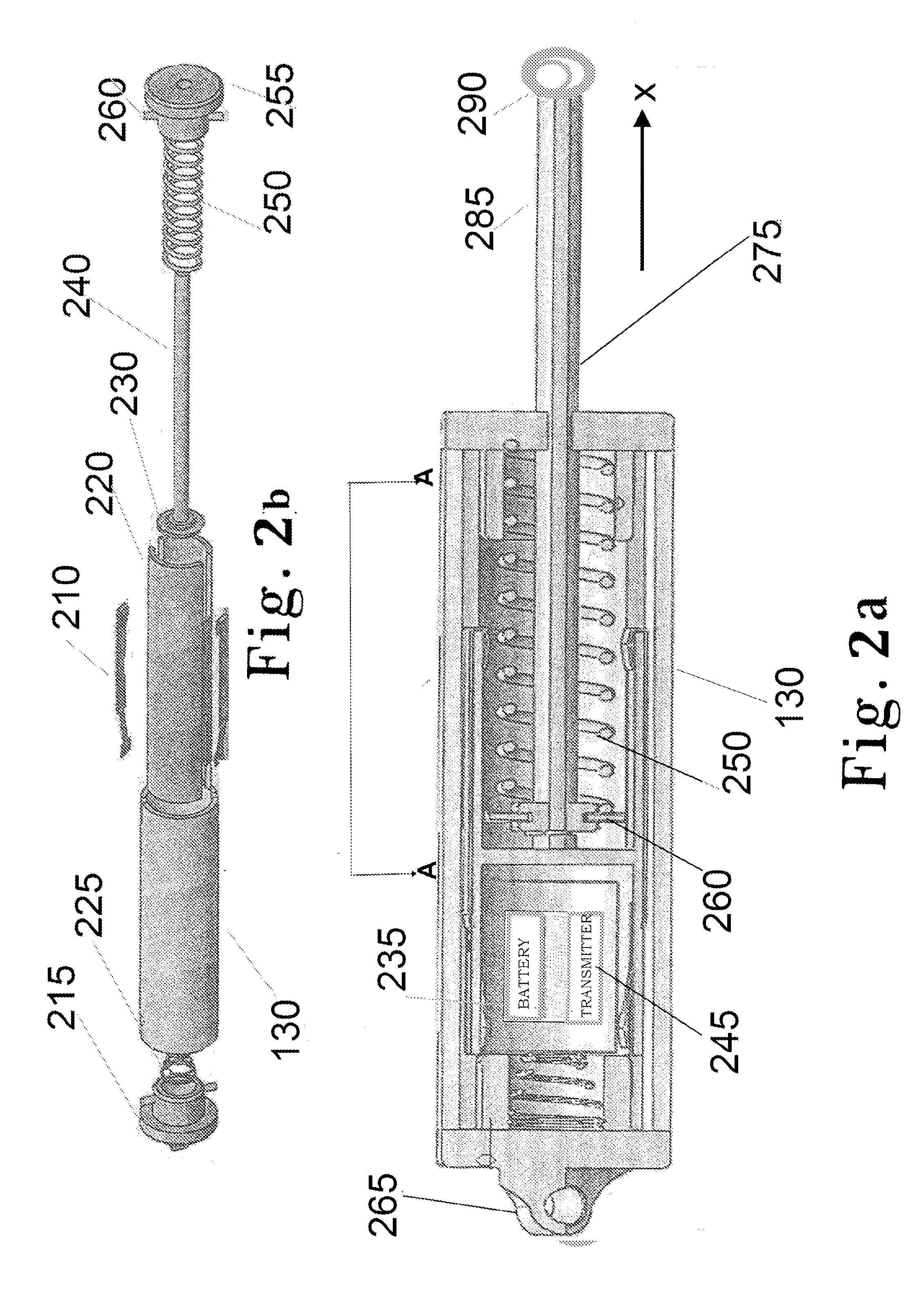Leash and collar for animal control
a technology for animal control and collars, applied in the field of training, can solve the problems of inability to meet the needs of the average pet owner, the collars that are actuated by the owner often do not sufficiently coincidentally produce the stimulus of the misbehavior of the pet, and the standalone device that is not practical for the average pet owner
- Summary
- Abstract
- Description
- Claims
- Application Information
AI Technical Summary
Problems solved by technology
Method used
Image
Examples
Embodiment Construction
[0021]The following detailed description includes the best mode of carrying out the invention and is made for the purpose of illustrating the general principles of the invention and should not be taken in a limiting sense. The scope of the invention is determined by reference to the claims. Each part or function is assigned, even if structurally identical to another part, a unique reference number wherever that part is shown in the drawing figures.
[0022]In the preferred embodiment, FIG. 1 shows the invention disclosed herein as it relates to an animal training system 100, which uses a leash 140 attached to a substantially rigid plastic or metal coupler device 130, which it turn is attached to a collar 170. When the coupler device 130 is subjected to a pulling force between an animal 110 and a trainer, a preset activation force triggers a transmitter that sends a signal to an independent correction collar 150. In another embodiment (not shown), it will be recognized that the coupler ...
PUM
 Login to View More
Login to View More Abstract
Description
Claims
Application Information
 Login to View More
Login to View More - R&D
- Intellectual Property
- Life Sciences
- Materials
- Tech Scout
- Unparalleled Data Quality
- Higher Quality Content
- 60% Fewer Hallucinations
Browse by: Latest US Patents, China's latest patents, Technical Efficacy Thesaurus, Application Domain, Technology Topic, Popular Technical Reports.
© 2025 PatSnap. All rights reserved.Legal|Privacy policy|Modern Slavery Act Transparency Statement|Sitemap|About US| Contact US: help@patsnap.com



